In-the-Loop Simulation Experiment of Aero-Engine Fault-Tolerant Control Technology
Abstract
:1. Introduction
2. Materials and Methods
2.1. Performance Degradation Simulation of Engine Gas Circuit Components
2.2. Extended Kalman Filter Design
2.3. Establishment of Augmented State Space Model for Turbofan Engine
3. Results
3.1. Fault Tolerant Control
3.1.1. Fault-Tolerant Control Based on Analytical Redundancy
3.1.2. Fault-Tolerant Control Based on Switching Control Rate
3.2. Hardware in the Loop Simulation
3.2.1. Hardware In-the-Loop Simulation Platform
3.2.2. Hardware In-the-Loop Simulation System
3.2.3. The Results of Hardware In-the-Loop Simulation
4. Discussion
5. Conclusions
Author Contributions
Funding
Institutional Review Board Statement
Informed Consent Statement
Data Availability Statement
Acknowledgments
Conflicts of Interest
References
- Zhang, S.-J. A Review of Aeroengine Control System. J. Aerosp. Power 2004, 19, 375–382. [Google Scholar]
- Guo, J. Research on Sensor Fault Diagnosis and Fault Tolerance Technology of UAV; Lanzhou University of Technology: Lanzhou, China, 2020. [Google Scholar]
- Zhang, R.; Hou, L.; Zhao, X.; Hu, Z. Signal Reconstruction method of Civil Aeroengine sensor and its application. J. Aeronaut. Power 2016, 31, 1268–1274. [Google Scholar]
- Fan, S. Aeroengine Control; Northwest University of Technology Press: Xi’an, China, 2008. [Google Scholar]
- Isermann, R.; Ballé, P. Trends in the Application of Model Based Fault Detection and Diagnosis of Technical Processes. Control. Eng. Pract. 1996, 5, 709–719. [Google Scholar] [CrossRef]
- Zheng, B. Research on Aeroengine Fault Diagnosis and Performance Parameter Prediction Based on Particle Swarm Optimization Algorithm; University of Electronic Science and Technology: Chengdu, China, 2018. [Google Scholar]
- Svetlov, V.A.; Dolenko, S.A. Development of the algorithm of adaptive construction of hierarchical neural network classifiers. Opt. Mem. Neural Netw. 2017, 26, 40–46. [Google Scholar] [CrossRef]
- Koboyashi, T.; Simon, D.L. Hybrid neural network genetic-algorithm technique for aircraft engine performance diagnostics. J. Propuls. Power 2001, 21, 751–758. [Google Scholar] [CrossRef]
- Yuan, Y.; Liu, X.; Ding, S.; Pan, B. Fault detection and location dystem for diagnosis of multiple faults in aeroengines. IEEE Access 2017, 3, 17671–17677. [Google Scholar] [CrossRef]
- Kobayashi, T.; Simon, D.L. Evaluation of an Enhanced Bank of Kalman Filters for In-Flight Aircraft Engine Sensor Fault Diagnostics. J. Eng. Gas Turbines Power 2005, 127, 497–504. [Google Scholar] [CrossRef] [Green Version]
- Kobayashi, T.; Simon, D.L. Application of a Bank of Kalman Filters for Aircraft Engine Fault Diagnostics. In Turbo Expo: Power for Land, Sea, and Air; American Society of Mechanical Engineers: New York, NY, USA, 2003; pp. 461–470. [Google Scholar]
- Amirarfaei, F.; Baniamerian, A.; Khorasani, K. Joint Kalman Filtering and Recursive Maximum Likelihood Estimation Approaches to Fault Detection and Identification of Boeing 747 Sensors and Actuators. In Proceedings of the 51st Aiaa Aerospace Sciences Meeting Including the New Horizons Forum and Aerospace Exposition, Grapevine, TX, USA, 7–10 January 2013; pp. 111–127. [Google Scholar]
- Pisano, A.D. Failure Indication and Corrective Action for Turboshaft Engines. J. Am. Helicopter Soc. 1980, 25, 36–42. [Google Scholar] [CrossRef]
- Wallhagen, R.E.; Arpasi, D. Self-teaching digital-computer program for fail-operational comtrol of a turbojet engine in a sea-leval test stand. Contract 1974, 501, 24. [Google Scholar]
- Lan, C.; Sun, J. Analytical redundancy technique based on component tracking filter. J. Aeronaut. Power 1994, 110, 64–67. [Google Scholar]
- Zhou, O. Research on Aeroengine Component Performance Tracking Filter; Northwest University of Technology: Xi’an, China, 2004. [Google Scholar]
- Zhang, P. Research on Aeroengine Fault Diagnosis Technology Based on Kalman Filter; Nanjing University of Aeronautics and Astronautics: Nanjing, China, 2009. [Google Scholar]
- Chen, Y. Research on Gas Path Fault Diagnosis of Turbojet Engine Based on NONLINEAR Model; Nanjing University of Aeronautics and Astronautics: Nanjing, China, 2014. [Google Scholar]
- Feng, M. Research on Filter Estimation Method of Gas Path Health Parameters of Turbofan Engine; Nanjing University of Aeronautics and Astronautics: Nanjing, China, 2013. [Google Scholar]
- Yu, G. Research on Gas Path Health Parameter Estimation Method of Turbofan Engine; Nanjing University of Aeronautics and Astronautics: Nanjing, China, 2012. [Google Scholar]
- Zhang, P.; Huang, J. Enhanced Self Tuning On-Board Real-Time Model (eSTORM) for Aircraft Engine Performance Health Tracking. J. Aeronaut. Power 2008, 23, 169–173. [Google Scholar]
- Lu, F.; Huang, J.; Lv, Y. Gas Path Health Monitoring for a Turbofan Engine Based on a Nonlinear Filtering Approach. Energies 2013, 6, 492–513. [Google Scholar] [CrossRef] [Green Version]
- Meng, Z.; Xiao, L.; Ma, L.; Li, C. Fault tolerant control of micro gas turbine based on improved imperial competition algorithm. J. Nanjing Univ. Aeronaut. Astronaut. 2020, 52, 485–492. [Google Scholar]
- Healy, T.; Kerr, L.; Larkin, L. Model based fuzzy logic sensor fault accommodation. In Turbo Expo: Power for Land, Sea, and Air, Proceedings of the International Gas Turbine and Aeroengine Congress and Exhibition, Orlando, FL, USA, 2 June 1997; ASME: Orlando, FL, USA, 1997; pp. 1–6. [Google Scholar]
- Moller, J.C.; Litt, J.S.; Guo, T.H. Neural Network-based Sensor Validation for Turboshaft Engines. In Proceedings of the 34th AIAA/ASME/SAE/ASEE Joint Propulsion Conference and Exhibit, Cleveland, OH, USA, 13–15 July 1998. [Google Scholar]
- Alwi, H.; Edwards, C. Fault detection and fault-tolerant control of a civil aircraft using a sliding-mode-based scheme. Control. Syst. Technol. 2008, 16, 499–510. [Google Scholar] [CrossRef] [Green Version]
- Diao, Y.; Passino, K.M. Intelligent fault-tolerant control using adaptive and learning methods. Control. Eng. Pract. 2002, 10, 801–817. [Google Scholar] [CrossRef] [Green Version]
- Xu, Q.; Li, H. Robust fault tolerant control of Aeroengine Based on Riccati equation. J. Aeronaut. Power 2003, 18, 440–443. [Google Scholar]
- Fu, Q. Robust design of aeroengine passive fault tolerant control system. Meas. Control. Technol. 2013, 32, 32–34. [Google Scholar]
- Zhu, Z.; Huang, X. A class of adaptive neural network fault-tolerant control based on backstepping method. Inf. Control. 2010, 39, 531–535. [Google Scholar]
- Huang, K.; Yin, Z.; Yang, Z. Research on fault Countermeasures of turboshaft engine speed signal and test verification. J. Aeronaut. Power 2007, 2, 280–284. [Google Scholar]
- Yang, Z.; Qiu, X.; Zhuang, X.; Huang, J. Fault tolerant control of Aeroengine Based on mode switching. J. Aeronaut. Power 2014, 29, 953–964. [Google Scholar]
- Huang, X. Intelligent fault tolerant digital control of aeroengine. J. Appl. Basic Eng. Sci. 2005, 4, 366–372. [Google Scholar]
- Liu, H. Research on Fault Tolerant Control Technology of Small Aeroengine Sensor; Harbin Engineering University: Harbin, China, 2011. [Google Scholar]
- Lu, F. Research on Fusion Technology of Aeroengine Fault Diagnosis; Nanjing University of Aeronautics and Astronautics: Nanjing, China, 2009. [Google Scholar]
- Ogaji, S.O.T.; Li, Y.G.; Sampath, S.; Singh, R. Gas-path Fault Diagnosis of a Turbofan Engine from Transient Data Using Artificial Neural networks. In Turbo Expo: Power for Land, Sea, and Air; American Society of Mechanical Engineers: New York, NY, USA, 2003; pp. 405–414. [Google Scholar]
- Kumar, A.; Viassolo, D.E. Model-Based Fault Tolerant Control; Glenn Research Center: Cleveland, OH, USA, 2008. [Google Scholar]
- Wang, S.; Huang, X. An Analytical Redundancy Estimation Method for Variable Cycle Engine Based on Improved State Tracking Filter. Patent Jiangsu Province CN112284752a, 29 January 2021. [Google Scholar]
- Zhang, H.; Ye, F.; Li, Y.; Chen, G. Semi physical simulation of integrated control of helicopter/engine system. J. Aeronaut. Power 2013, 28, 1650–1658. [Google Scholar]
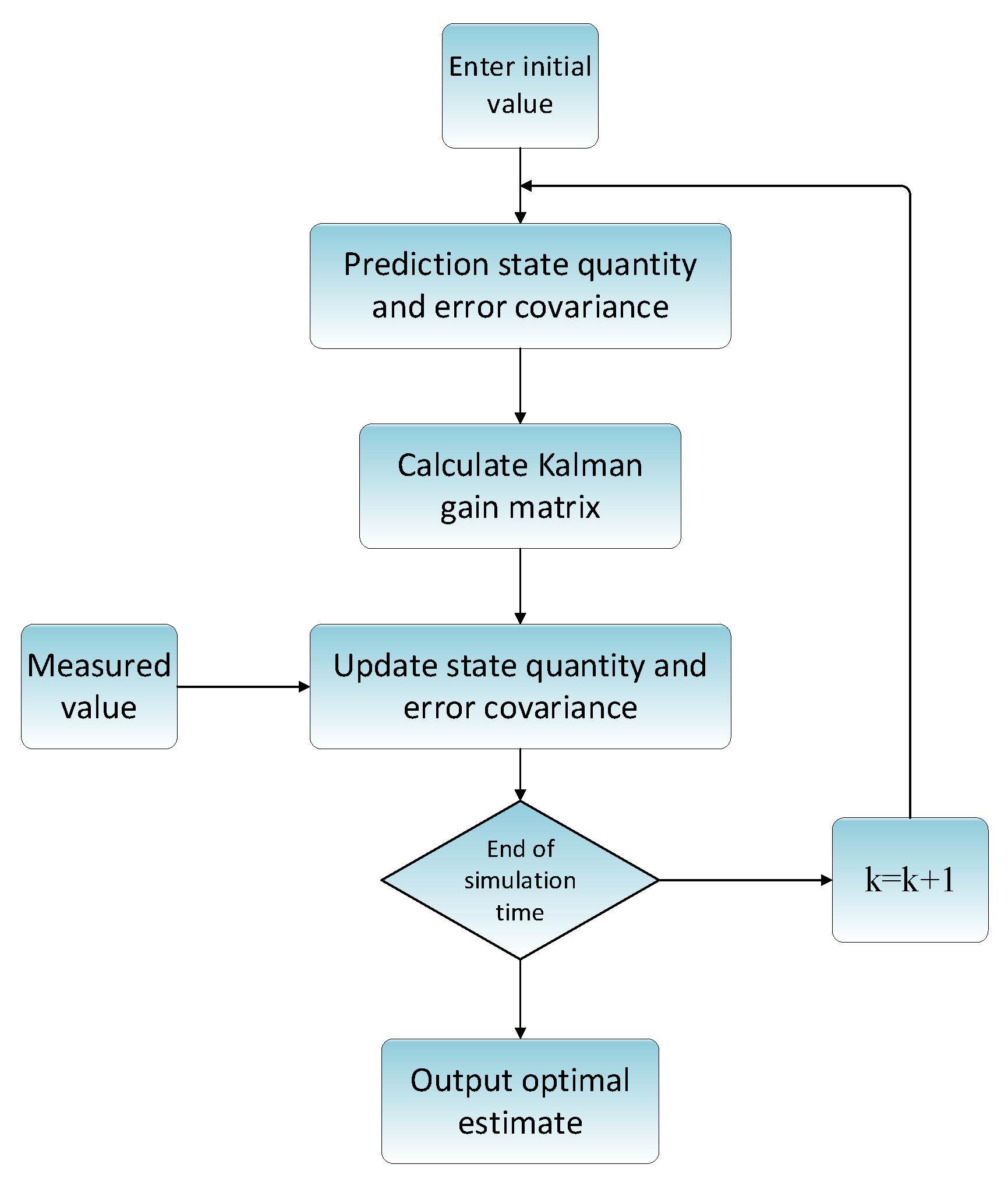
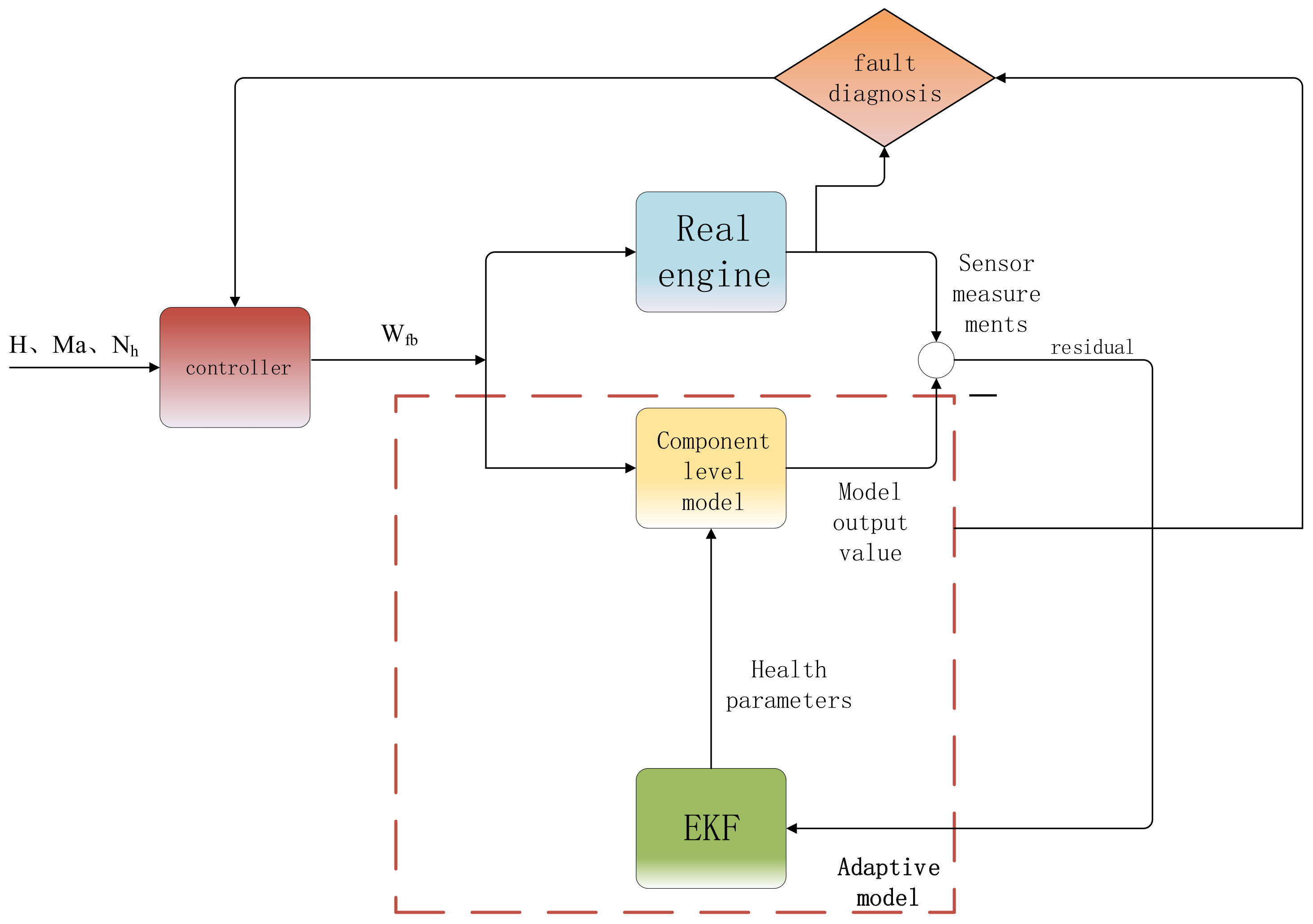
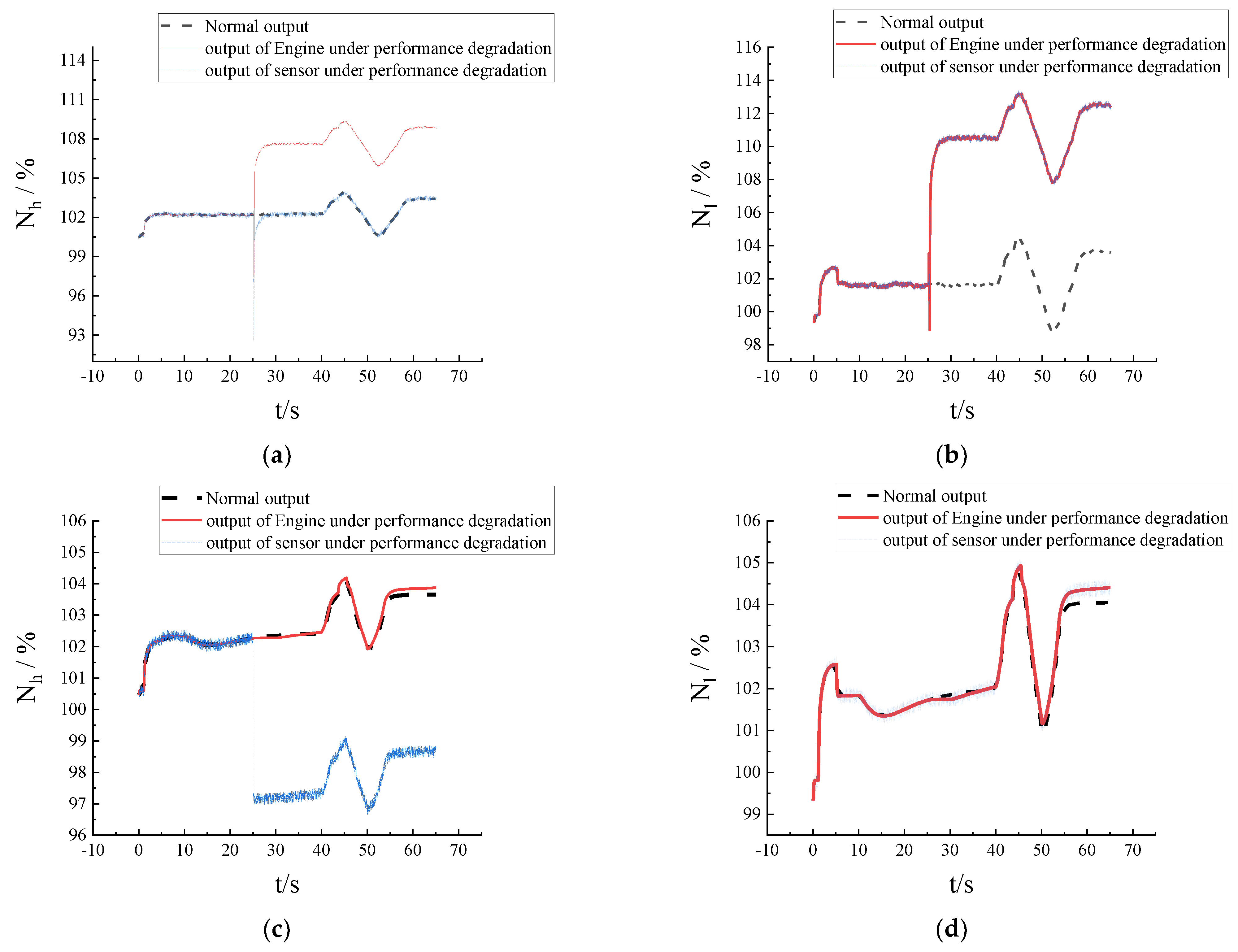
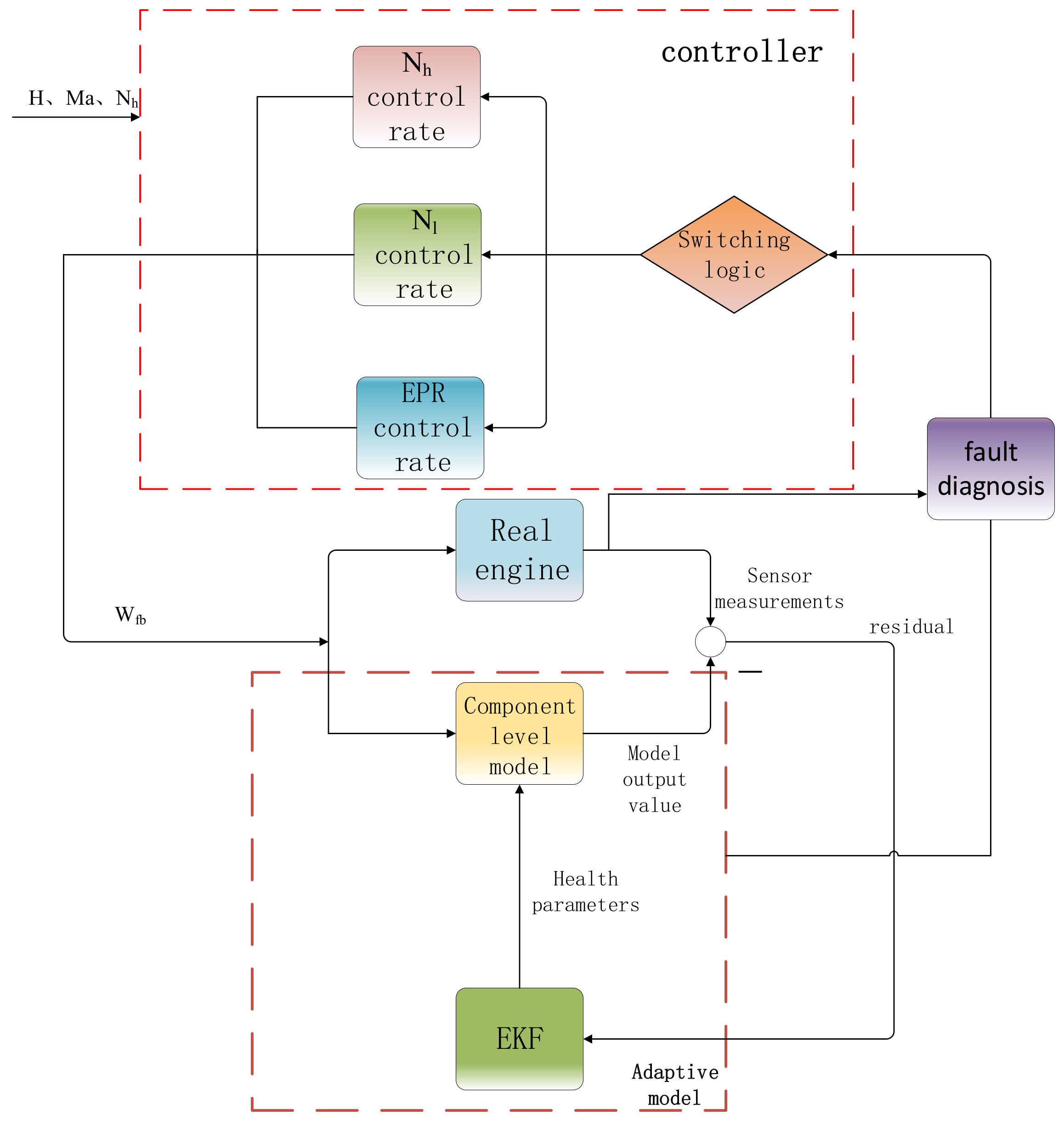
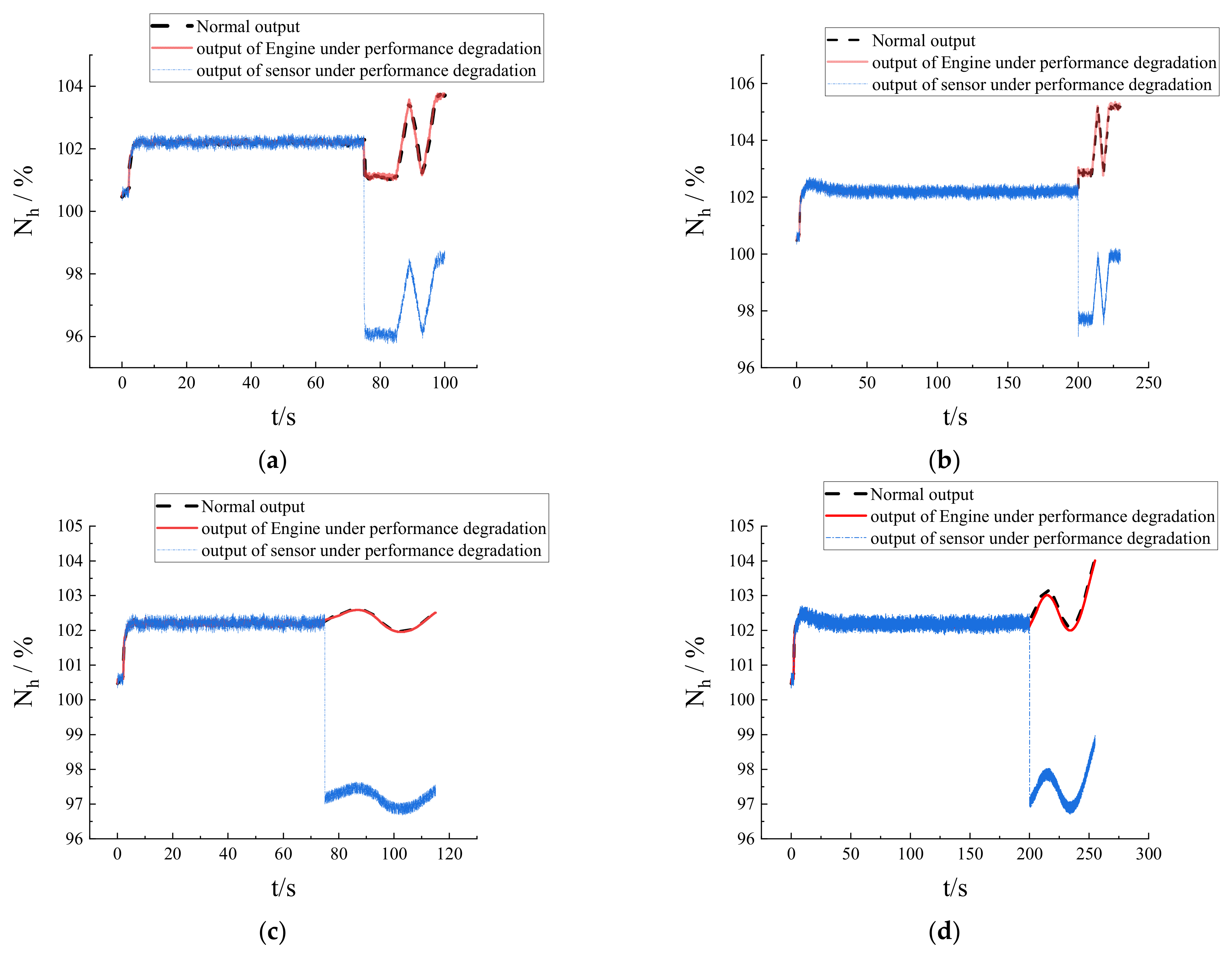
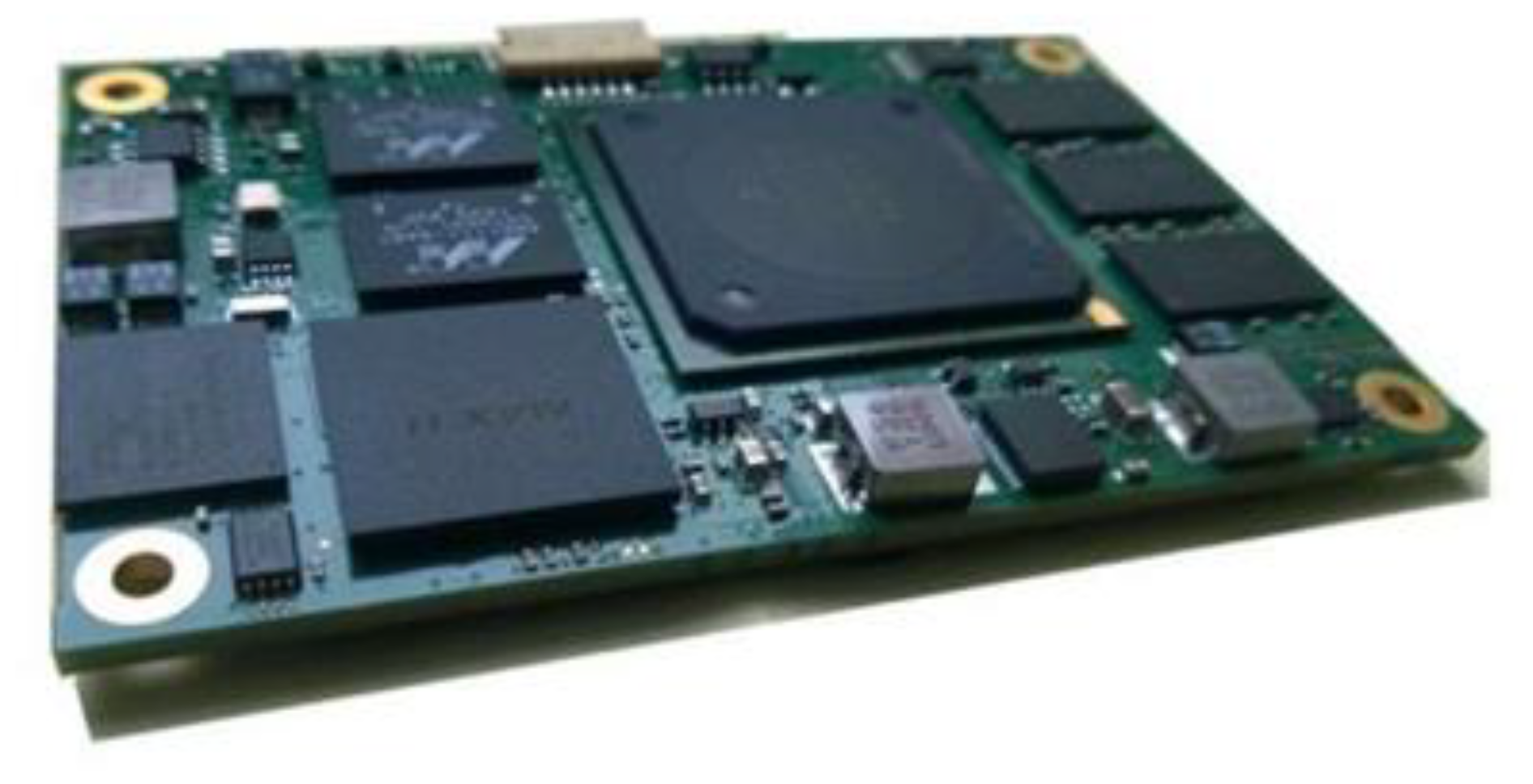

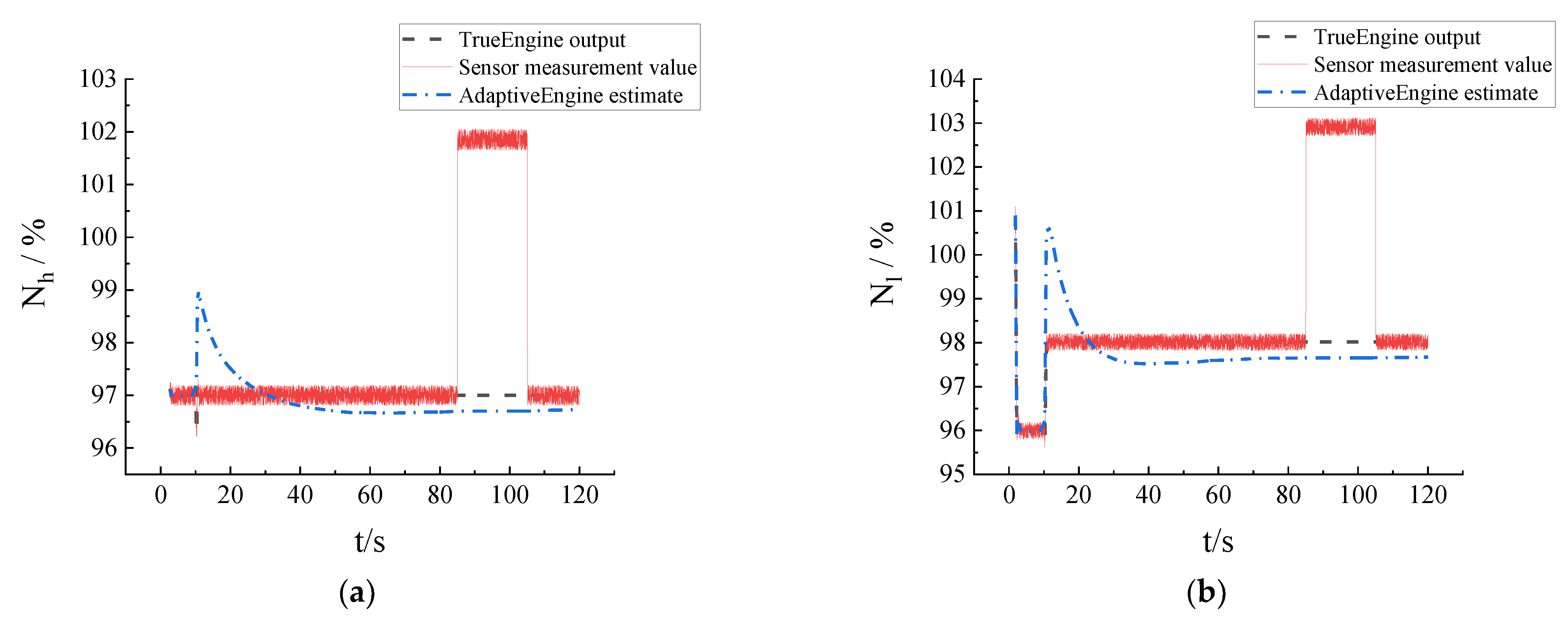
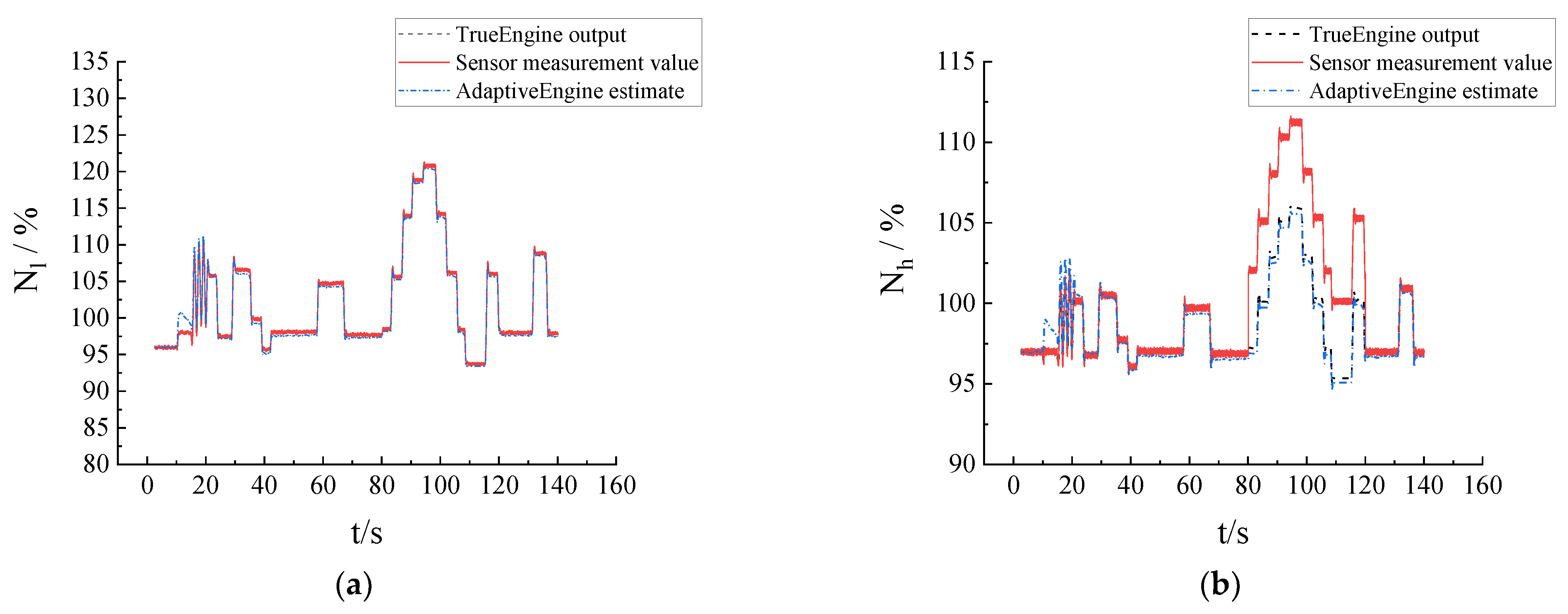
| Number of Cycles | Fan | Compressor | HPT | LPT | ||||
|---|---|---|---|---|---|---|---|---|
| Efficiency/% | Flow/% | Efficiency/% | Flow/% | Efficiency/% | Flow/% | Efficiency/% | Flow/% | |
| 0 | 0 | 0 | 0 | 0 | 0 | 0 | 0 | 0 |
| 3000 | −1.50 | −2.04 | −2.94 | −3.91 | −2.63 | 1.76 | −0.54 | 0.26 |
| 4500 | −2.18 | −2.85 | −6.17 | −8.99 | −3.22 | 2.17 | −0.81 | 0.34 |
| 6000 | −2.85 | −3.65 | −9.40 | −14.06 | −3.81 | 2.57 | −1.08 | 3.42 |
| Different States | Nh/% | Nl/% | P3/Pa | T5/K |
|---|---|---|---|---|
| Normal state | 100.266 | 99.192 | 2,919,351.413 | 1038.819 |
| Performance degradation | 100.714 | 99.639 | 2,932,321.013 | 1040.190 |
| Measured Data | Noise Level +/−% |
|---|---|
| Nh, Nl | 0.15 |
| Total pressure | 0.20 |
| Total temperature | 0.20 |
| Fault | Health Parameters | Minor Fault | Medium Fault | Large Fault |
|---|---|---|---|---|
| Compressor | Efficiency | −1.5% | −3% | −5% |
| Flow | −1.5% | −3% | −5% | |
| HPT | Efficiency | +1.5% | −3% | −5% |
| Flow | +1.5% | +3% | +5% |
| Sensor Measurements | Nh/% | Nl/% | P3/Pa | T5/K |
|---|---|---|---|---|
| Before introducing noise | 100.6 | 99.81 | 2,930,250 | 1038.14 |
| After introducing noise | 100.63 | 99.69 | 2,928,840 | 1037.64 |
| Scale/% | 0.029 | 0.12 | 0.048 | 0.048 |
| Faulty Sensor | Controlled Quantity before Switching | Controlled Quantity after Switching |
|---|---|---|
| Nh | Nl | Nh |
| Nl | Nh | Nl |
| P5 | EPR | Nh |
| P2 | EPR | Nh |
| Nh, Nl | Nh or Nl | EPR |
| Parameter | Nh | Nl |
|---|---|---|
| Sensor true value of real engine/% | 97.00000 | 98.01408 |
| Sensor measurements of real engine/% | 97.05500 | 97.96907 |
| Sensor estimation of adaptive model/% | 96.73110 | 97.67080 |
| Error/% | 0.00277 | 0.00350 |
Publisher’s Note: MDPI stays neutral with regard to jurisdictional claims in published maps and institutional affiliations. |
© 2022 by the authors. Licensee MDPI, Basel, Switzerland. This article is an open access article distributed under the terms and conditions of the Creative Commons Attribution (CC BY) license (https://creativecommons.org/licenses/by/4.0/).
Share and Cite
Zhang, M.; Huang, X.; Wang, S.; Luo, L. In-the-Loop Simulation Experiment of Aero-Engine Fault-Tolerant Control Technology. Appl. Sci. 2022, 12, 1716. https://doi.org/10.3390/app12031716
Zhang M, Huang X, Wang S, Luo L. In-the-Loop Simulation Experiment of Aero-Engine Fault-Tolerant Control Technology. Applied Sciences. 2022; 12(3):1716. https://doi.org/10.3390/app12031716
Chicago/Turabian StyleZhang, Mengtian, Xianghua Huang, Shengchao Wang, and Liantan Luo. 2022. "In-the-Loop Simulation Experiment of Aero-Engine Fault-Tolerant Control Technology" Applied Sciences 12, no. 3: 1716. https://doi.org/10.3390/app12031716
APA StyleZhang, M., Huang, X., Wang, S., & Luo, L. (2022). In-the-Loop Simulation Experiment of Aero-Engine Fault-Tolerant Control Technology. Applied Sciences, 12(3), 1716. https://doi.org/10.3390/app12031716





